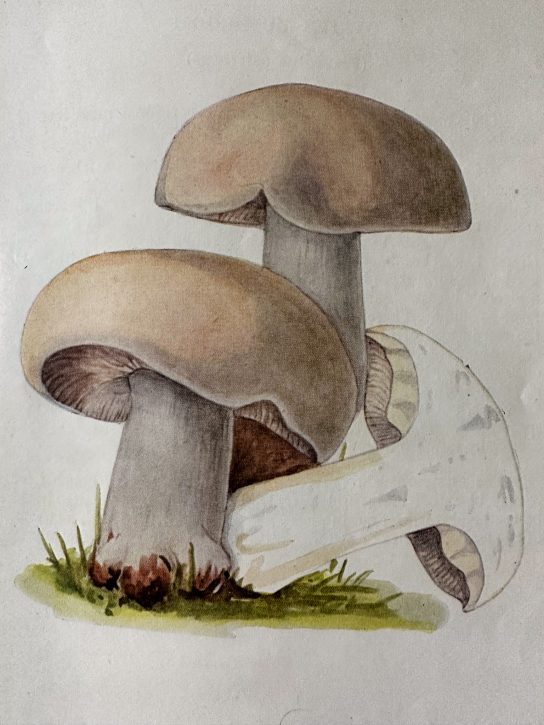Cry “God for Harry, England and St George’s Mushrooms.”
Tomorrow is St George’s day, which is an important day in my calendar. That’s not because I’m particularly nationalistic, swept away with fervour for the patron saint of England and Ethiopia. It’s not because I’m particularly keen on Roman soldiers who lived in Palestine and who were killed because of their religious views in the 4th Century. It’s because of the mushrooms which fruit around the 23rd April, celebrated as St George’s day in England.
I’m walking alongside my favourite abandoned drainage channel and dual carriageway siding, which is euphemistically referred to as a ‘Local Nature Reserve’, when I see these beauties:

They are St George’s mushrooms, Calocybe gambosa. They’re one of the few mushrooms which grow in spring. They have white flesh, white gills and a white stem, which raises all kinds of red flags, because so do several Amanita species which can be deadly poisonous. Amanitas aren’t found at this time of year, and St George’s Mushrooms do not grow from a bulbous sac, and don’t have a ring around the stem, so that’s some reassurance.
St George’s mushrooms also have crowded gills, a thick cap with shallow gills, and a distinctive smell. I check my 1945 Bulletin No. 23 from the Ministry of Agriculture and Fisheries:

Here’s what it has to say:
Apart from Morels, this is the only really good mushroom to be found in spring. Its common name probably refers to the fact that it may appear round about St. George’s Day. In late seasons, however, May is the more likely month in which to look for it.

The cap is usually up to 3 inches across, thick and solid, rounded and usually rather irregular in shape, with the margin turned in for a long time. The colour is pale creamy white inclining to yellowish or pale tan at the top, and the skin is soft to the touch like a kid glove.
I wonder how common the knowledge of what kid leather feels like is now compared to 1945. It’s fine leather made from baby goats. The leather makes beautiful gloves, although the goats are less appreciative.
The stem is thick, short and cream-coloured like the cap, often curved or irregular in shape and somewhat swollen towards the base. The gills are watery-white or pale cream, narrow, crowded, and attached to the stem with a slight arch (sinuate). The spores are white. The flesh of the cap is solid, firm, and white, and may be up to 1 inch thick in the middle. When cut it has a strong odour which is described as like that of new meal.
‘New meal’? Have you ever described anything as smelling mealy? Meal is coarsely-ground flour, and where we get the name for mealworms, the larvae of Four Beetles, which eat meal. Do you know what it smells like? Are you off to your kitchen cupboard now to stick your nose in a bag of flour?
The St. George’s Mushroom grows in pastures or on open downs, and appears to prefer limestone or chalk soils. It often grows in rings, and the stout, solid appearance is reminiscent of Blewits, from which it differs in the paler colour, meal-like odour and white spores.
There’s a line, rather than a ring here, as I’m on an open path through a strip of woodland next to the dual carriageway.
The St. George’s Mushroom, Blewits and Wood Blewits are all excellent when fried or grilled, provided young, dry specimens are chosen. They are not recommended for stewing, but they may be sliced and dried for use as a flavouring for soups or stews in winter.
I’m going back with a basket and will celebrate St George’s Day with an omelette.
Cry “God for Harry, England and St George’s Mushrooms”, as Shakespeare didn’t say.